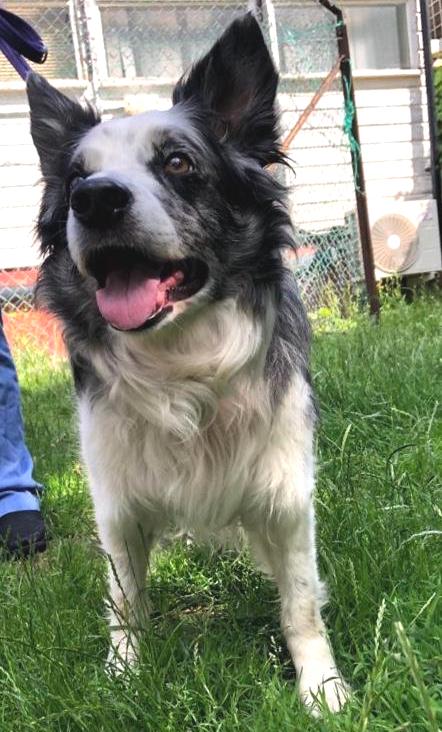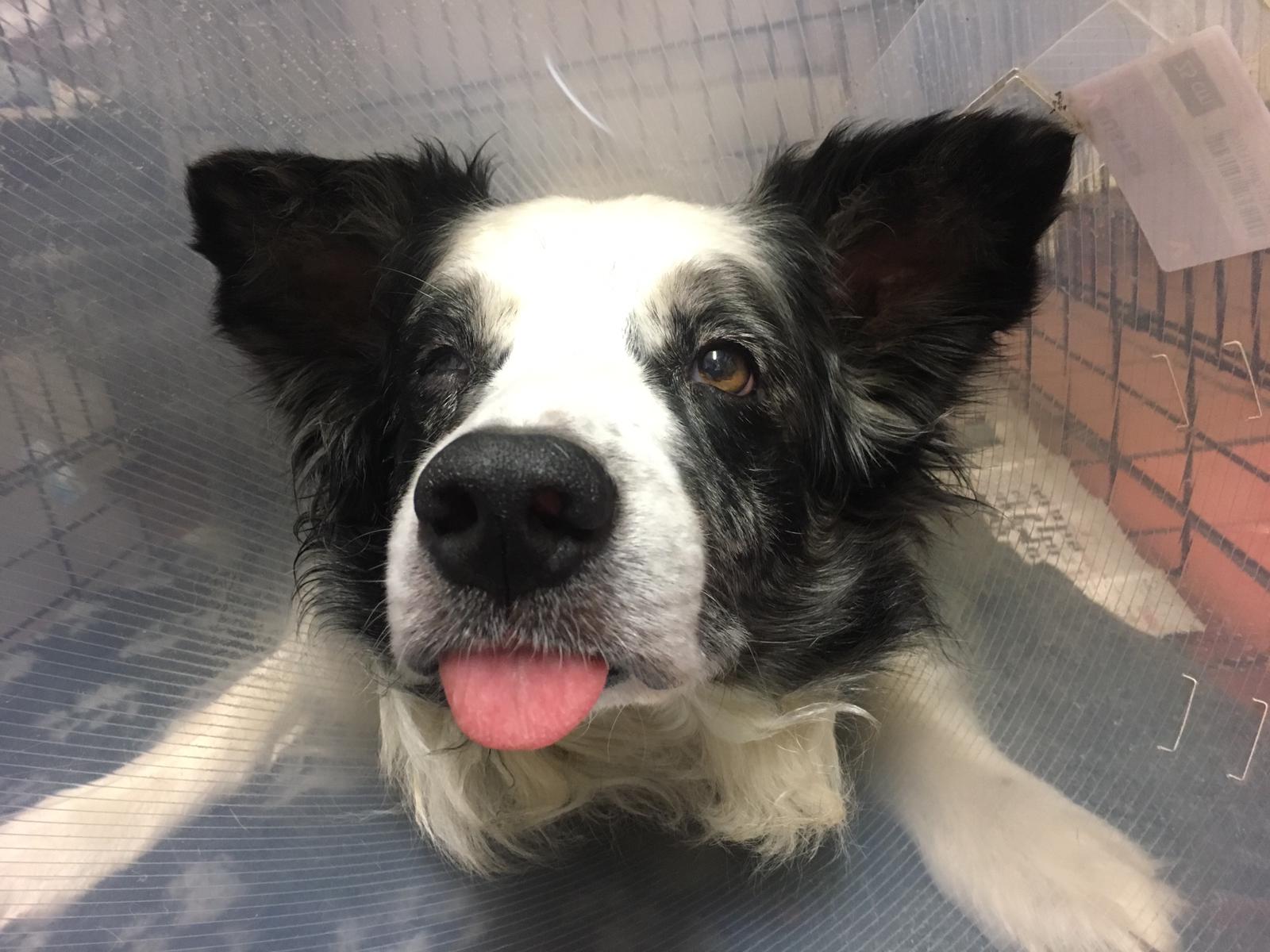
Lovely 12 year old border collie Harley has been a regular visitor to see us over the last few months.
Harley's owner noticed that his right eye was sore and brought him in to an appointment. An ophthalmic assessment revealed that Harley had an ulcer on the surface of his eye, a structure called the cornea. The cornea is the clear, transparent window of the eye and is made up of three main layers.
An injury of the cornea is known as an ulcer. Generally these wounds are described as superficial (shallow)
whereby only the surface layer of the cornea is affected or they can be deep where the wound extends deeper into the other layers. There are several reasons for their occurrence, for example; trauma to the eye (from a scratch ,a twig etc), foreign material entering the eye, and underlying conditions of the eye such as dry eye, deformed eyelids/eyelashes.
Harley's eye ulcer was shallow and the initial treatment involved supporting the heath of the eye and of Harley through the healing process of the ulcer. Harley was prescribed antibiotic eye drops to prevent and protect against infection, lubricating drops to help keep the eye's surface healthy and pain medicine to be taken by mouth as corneal ulcers can be quite painful.
It was important that Harley's eye was monitored closely as even seemingly 'simple ulcers' can worsen. Harley came back for check ups every other day. Vet Lavanya was a little concerned that although the ulcer was no worse there had been no improvement. She applied a local anaesthetic eye drop to Harley's eye and carried out a procedure called debridement. This involved Harley sitting very still to enable Lavanya to rub the surface of the ulcer with a cotton bud. This removes any loose epithelial cells and freshens up the wound edges to stimulate healing. Harley was such a good boy throughout. The frequency of Harley's eye drop treatment was increased. At his next visit, a couple of days later, vet Katie assessed his eye and worryingly it had worsened. The ulcer had deepened and Katie was concerned that it might develop into a 'melting ulcer'. This is when the ulcer deteriorates rapidly and often a specific bacterial infection is present. If the ulcer progresses even deeper there is a risk of rupture of the eye. Due to the seriousness of the condition, Harley was admitted to the hospital for intensive medical management. After two days, head vet Cathy reassessed Harley's eye and decided that the next step was for her to perform a surgical procedure called a conjunctival pedicle graft to further support and stabilise his eye. ( see below for details). This required Harley to have a general anaesthetic.
 Following the surgery, Harley spent the next three days in the hospital so that we could continue to administer his eye treatment. He was such a brave boy and wore his head cone without any fuss. With Harley's eye doing well, he was allowed home. Despite a surgical approach, Harley still needed frequent daily eye drops so he spent a combination of days at home and at the hospital ( on days when his owner was out). This took lots of time, patience and dedication from his lovely owner.
Following the surgery, Harley spent the next three days in the hospital so that we could continue to administer his eye treatment. He was such a brave boy and wore his head cone without any fuss. With Harley's eye doing well, he was allowed home. Despite a surgical approach, Harley still needed frequent daily eye drops so he spent a combination of days at home and at the hospital ( on days when his owner was out). This took lots of time, patience and dedication from his lovely owner.
He was quite settled and happy during the days he spent with us and enjoyed plenty of cuddles with the nursing staff!
After several weeks, Harley's eye was improving and healing well. With the graft having done its job Cathy carried out a small procedure under a brief general anaesthetic whereby she trimmed back the remaining graft to encourage it to shrink. We are delighted to say that Harley continues to do well.
Harley has been a joy to look after and very brave throughout his treatment .He is a well deserved star pet!
Pedicle graft
The conjunctiva is a pink thin membrane at the edge of the eye. In cases of rapidly progressive corneal ulcers, it is possible to surgically create a stalk or ‘pedicle’ of conjunctiva which can then be stitched into the corneal ulcer. The pedicle of conjunctiva not only provides some stability for the weakened cornea but also brings blood vessels (carrying healing cells and antibodies) right to the ulcer – this helps to fight infection.



